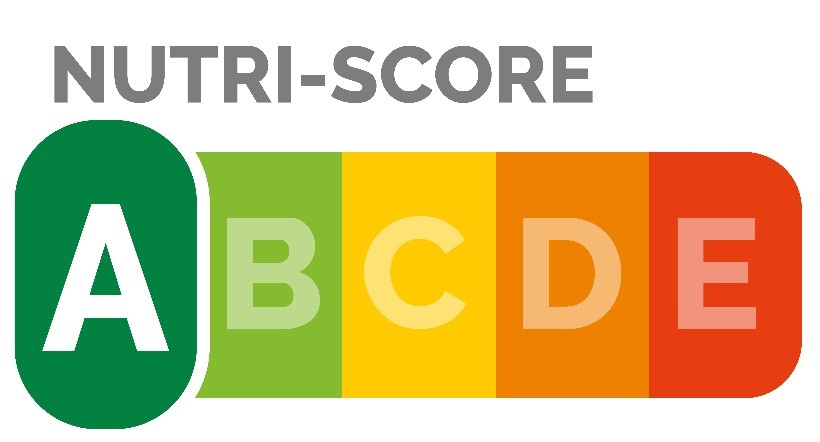Association between nutritional profiles of foods underlying Nutri-Score front-of-pack labels and mortality: EPIC cohort study in 10 European countries
Mélanie Deschasaux1,2 Inge Huybrechts2,3 Chantal Julia1,4 Serge Hercberg1,2,4 Manon Egnell1 Bernard Srour1,2 Emmanuelle Kesse-Guyot1,2 Paule Latino-Martel1,2 Carine Biessy3 Corinne Casagrande3 Neil Murphy2,3 Mazda Jenab2,3 Heather A Ward5 Elisabete Weiderpass3,6 Kim Overvad7 Anne Tjønneland8,9 Agnetha Linn Rostgaard-Hansen9 Marie-Christine Boutron-Ruault10,11 Francesca Romana Mancini10,11 Yahya Mahamat-Saleh10,11 Tilman Kühn12 Verena Katzke12 Manuela M Bergmann13,14 Matthias B Schulze13,14 Antonia Trichopoulou15 Anna Karakatsani15,16 Eleni Peppa15 Giovanna Masala17 Claudia Agnoli18 Maria Santucci De Magistris19 Rosario Tumino20 Carlotta Sacerdote21 Jolanda MA Boer22 WM Monique Verschuren22,23 Yvonne T van der Schouw23 Guri Skeie6 Tonje Braaten6 M Luisa Redondo24 Antonio Agudo25 Dafina Petrova26,27,28 Sandra M Colorado-Yohar28,29,30 Aurelio Barricarte28,31,32 Pilar Amiano28,33 Emily Sonestedt34 Ulrika Ericson34 Julia Otten35 Björn Sundström35 Nicholas J Wareham36 Nita G Forouhi36 Paolo Vineis37 Konstantinos K Tsilidis38,39 Anika Knuppel40 Keren Papier40 Pietro Ferrari2,3 Elio Riboli,5 Marc J Gunter2,3 Mathilde Touvier1,2
1 Sorbonne Paris Nord University, Inserm, Inrae, Cnam, Nutritional Epidemiology Research Team (EREN), Epidemiology and Statistics Research Centre – University of Paris (CRESS), Bobigny, France
2 French network for Nutrition And Cancer Research (NACRe network), France
3 International Agency for Research on Cancer, World Health Organization, Lyon, France
4 Department of Public Health, Hôpitaux Universitaires Paris Seine-Saint-Denis (AP-HP), Bobigny, France
5 Faculty of Medicine, School of Public Health, Imperial College London, London, UK
6 Department of Community Medicine, Faculty of Health Sciences, UiT The Arctic University of Norway, Tromsø, Norway
7 Department of Public Health, Section for Epidemiology, Aarhus University, Aarhus C, Denmark
8 Department of Public Health, University of Copenhagen, Copenhagen, Denmark
9 Danish Cancer Society Research Centre, Diet, Genes and Environment, Copenhagen, Denmark
10 CESP, INSERM U1018, Université Paris-Sud, UVSQ, Université Paris-Saclay, Paris, France
11 Gustave Roussy, Villejuif, France
12 Division of Cancer Epidemiology, German Cancer Research Centre (DKFZ), Heidelberg, Germany
13 Department of Molecular Epidemiology, German Institute of Human Nutrition Potsdam-Rehbruecke, Nuthetal, Germany
14 Institute of Nutrition Science, University of Potsdam, Nuthetal, Germany
15 Hellenic Health Foundation, Athens, Greece
16 2nd Pulmonary Medicine Department, School of Medicine, National and Kapodistrian University of Athens, Attikon University Hospital, Haidari, Greece
17 Cancer Risk Factors and Life-Style Epidemiology Unit, Institute for Cancer Research, Prevention and Clinical Network (ISPRO), Florence, Italy
18 Epidemiology and Prevention Unit, Fondazione IRCCS Istituto Nazionale dei Tumori, Milan, Italy
19 AOU Federico II, Naples, Italy
20 Cancer Registry and Histopathology Department, Provincial Health Authority ASP Ragusa, Italy
21 Unit of Cancer Epidemiology, Città della Salute e della Scienza University-Hospital and Centre for Cancer Prevention (CPO), Turin, Italy
22 National Institute for Public Health and the Environment, Bilthoven, Netherlands
23 Julius Centre for Health Sciences and Primary Care, University Medical Centre Utrecht, Utrecht University, Utrecht, Netherlands
24 Public Health Directorate, Asturias, Spain
25 Unit of Nutrition and Cancer, Cancer Epidemiology Research Program, Catalan Institute of Oncology – ICO, Group of Research on Nutrition and Cancer, Bellvitge Biomedical Research Institute – IDIBELL, L’Hospitalet of Llobregat, Barcelona, Spain
26 Andalusian School of Public Health (EASP), Granada, Spain
27 Instituto de Investigación Biosanitaria de Granada (ibs.GRANADA), Granada, Spain
28 CIBER of Epidemiology and Public Health (CIBERESP), Spain
29 Department of Epidemiology, Murcia Regional Health Council, IMIB-Arrixaca, Murcia, Spain
30 Research Group on Demography and Health, National Faculty of Public Health, University of Antioquia, Medellín, Colombia
31 Navarra Public Health Institute, Pamplona, Spain
32 Navarra Institute for Health Research (IdiSNA), Pamplona, Spain
33 Public Health Division of Gipuzkoa, Biodonostia Health Research Institute, Ministry of Health of the Basque Government, San Sebastian, Spain
34 Department of Clinical Sciences Malmö, Lund University, Malmö, Sweden
35 Department of Public Health and Clinical Medicine, Umeå University, Umeå, Sweden
36 MRC Epidemiology Unit, University of Cambridge School of Clinical Medicine, Cambridge Biomedical Campus, Cambridge, UK
37 MRC Centre for Environment and Health, School of Public Health, Imperial College London, London, UK
38 Department of Epidemiology and Biostatistics, School of Public Health, Imperial College London, London, UK
39 Department of Hygiene and Epidemiology, University of Ioannina School of Medicine, Ioannina, Greece
40 Cancer Epidemiology Unit, Nuffield Department of Population Health, University of Oxford, Oxford, UK
British Medical Journal https://dx.doi.org/10.1136/bmj.m3173


